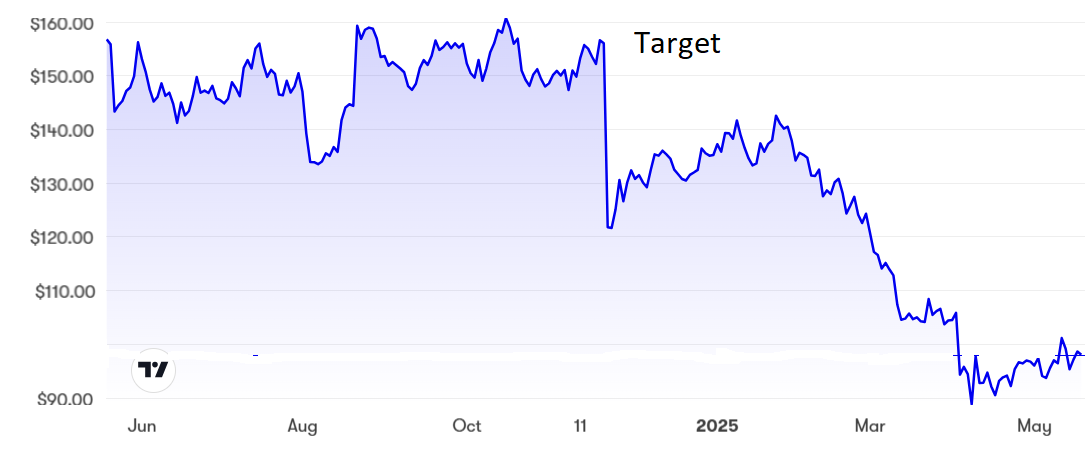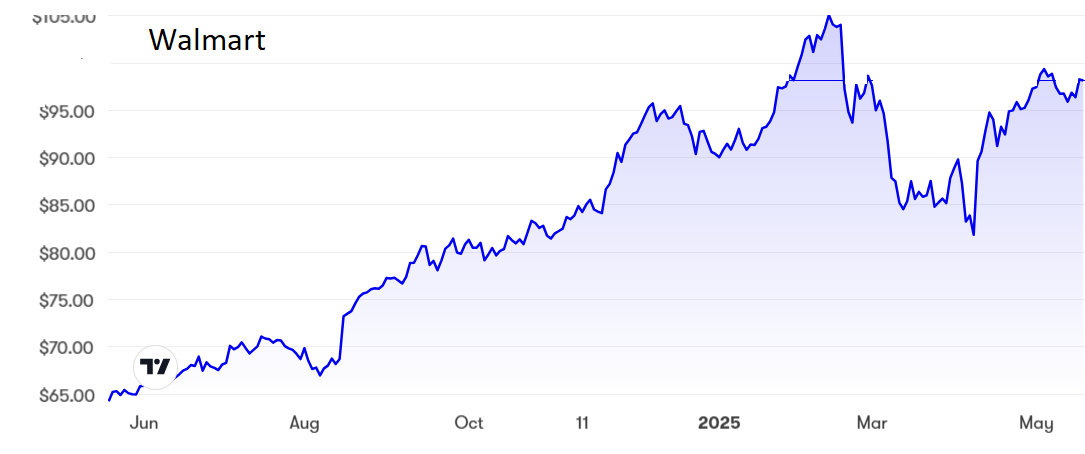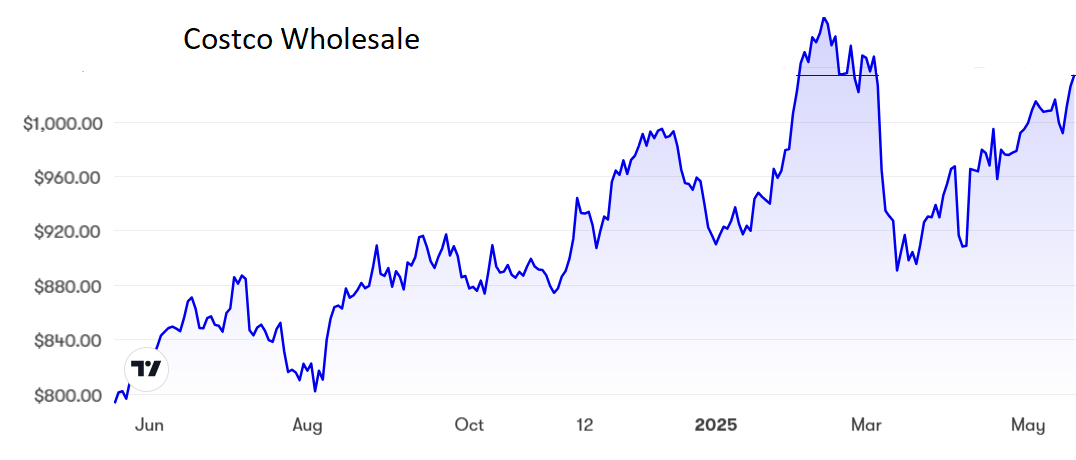Only one of these three rival stocks is a buy
This competitive sector has some significant players, but analyst Rodney Hobson would only buy one of them at current levels.
21st May 2025 09:03
by Rodney Hobson from interactive investor

A stark warning on rising prices has been issued by major US retailer Walmart Inc (NYSE:WMT). That warning naturally applies to others in the sector, which has nevertheless seen shares rise from a recent low. The question now is which company’s shares look the best prospect at current prices.
- Invest with ii: Buy US Stocks from UK | Most-traded US Stocks | Cashback Offers
Walmart’s latest quarterly results were expertly analysed by Keith Bowman here, when he pointed out that investors had decided that growth in online sales were sufficient to offset the group’s remarks about looming price increases.
However, investors should pay attention. Walmart said it will have to raise prices now that US tariffs on imported goods have been introduced. Remember, these are tariffs that had little impact on first-quarter figures except for accelerated buying of non-perishable goods. Food prices were inevitably rising pretty quickly for imported produce.
Proposed tariffs have in some cases been reduced, but chief executive Doug McMillon says that even at reduced levels Walmart is not able to absorb all the price increases given the narrow margins that retailers work on.
The message is that price rises in the shops will become more pronounced by the end of this month.
Given that Walmart is the largest retailer in the world, and it uses its size to screw down the prices it pays its suppliers, smaller rivals are likely to be equally or more affected.
- ii view: Home Depot reassures despite trade tariffs
- This top hedge fund sees global stocks beating the US through 2035
- Smaller companies: on the road – the US
Costco Wholesale Corp (NASDAQ:COST)has seen its shares rise sharply after reporting a 6.4% rise in comparable sales during the five weeks to 6 April. As with Walmart, there was strong growth in online sales but the excitement at the figures looks overdone, quite apart from the fact that in business as in economics one month does not make a reliable trend.
Because of the way that Easter fell, March had an extra trading day that added between 1% and 1.5% to growth. On the positive side, net sales are holding up at more than 8% higher than in the previous 12 months.
The most intriguing prospect is Target Corp (NYSE:TGT), whose latest results are imminent. Analysts are expecting earnings per share to be down 20% on last year. Target has suffered more than most American retailers from a squeeze on consumer spending, but the impact has been exacerbated by supply chain issues which should ease despite the further impact of tariff barriers.
The shares have dropped 35% over the past year to $98, more than reflecting the sales fall, but the problems are priced into a price/earnings (PE) ratio of only 11 and a yield of 4.5%.

Source: interactive investor. Past performance is not a guide to future performance.
Walmart shares slipped from $105 to $83 as the tariff seesaw rose and fell but they have recovered all the way to $98, where they are likely to run into resistance. The PE ratio is factoring in a lot of good news at 42, especially as the yield is below 1%.

Source: interactive investor. Past performance is not a guide to future performance.
CostCo shares have followed a similar path, peaking in February at $1,080 before falling all the way to $890 a month later. They have now perked up to $1.035 where the PE is even more demanding at 60 while the yield is less than 0.5%.

Source: interactive investor. Past performance is not a guide to future performance.
Hobson’s choice: Walmart has recovered far enough for now given the uncertainties, although if you are in, it looks right to hold on. Costco’s rating looks too rich despite the increased sales. I would take at least some profits before reality strikes.
Target is a buy – but only if you have an appetite for risk. The shares have ticked up from $90 over the past few days in the hope that quarterly figures will not turn out too bad after all.
Rodney Hobson is a freelance contributor and not a direct employee of interactive investor.
These articles are provided for information purposes only. Occasionally, an opinion about whether to buy or sell a specific investment may be provided by third parties. The content is not intended to be a personal recommendation to buy or sell any financial instrument or product, or to adopt any investment strategy as it is not provided based on an assessment of your investing knowledge and experience, your financial situation or your investment objectives. The value of your investments, and the income derived from them, may go down as well as up. You may not get back all the money that you invest. The investments referred to in this article may not be suitable for all investors, and if in doubt, an investor should seek advice from a qualified investment adviser.
Full performance can be found on the company or index summary page on the interactive investor website. Simply click on the company's or index name highlighted in the article.
Disclosure
We use a combination of fundamental and technical analysis in forming our view as to the valuation and prospects of an investment. Where relevant we have set out those particular matters we think are important in the above article, but further detail can be found here.
Please note that our article on this investment should not be considered to be a regular publication.
Details of all recommendations issued by ii during the previous 12-month period can be found here.
ii adheres to a strict code of conduct. Contributors may hold shares or have other interests in companies included in these portfolios, which could create a conflict of interests. Contributors intending to write about any financial instruments in which they have an interest are required to disclose such interest to ii and in the article itself. ii will at all times consider whether such interest impairs the objectivity of the recommendation.
In addition, individuals involved in the production of investment articles are subject to a personal account dealing restriction, which prevents them from placing a transaction in the specified instrument(s) for a period before and for five working days after such publication. This is to avoid personal interests conflicting with the interests of the recipients of those investment articles.